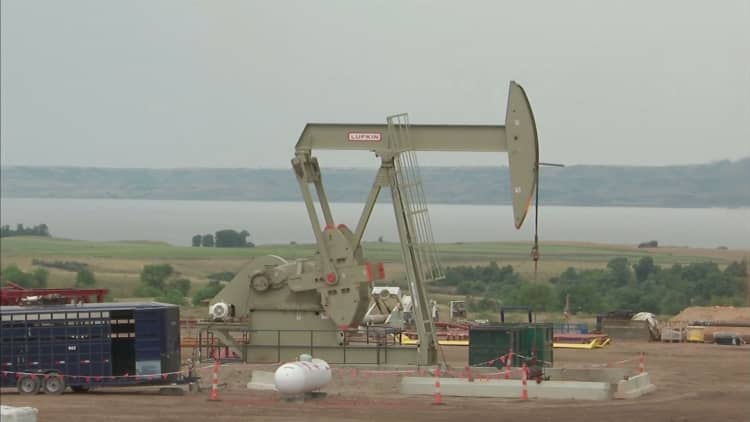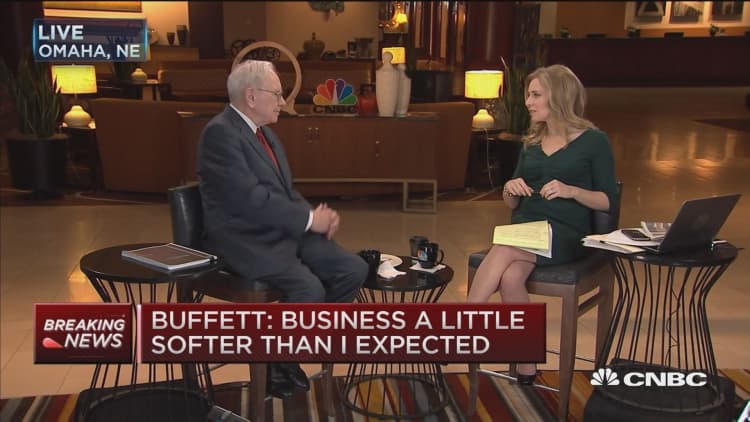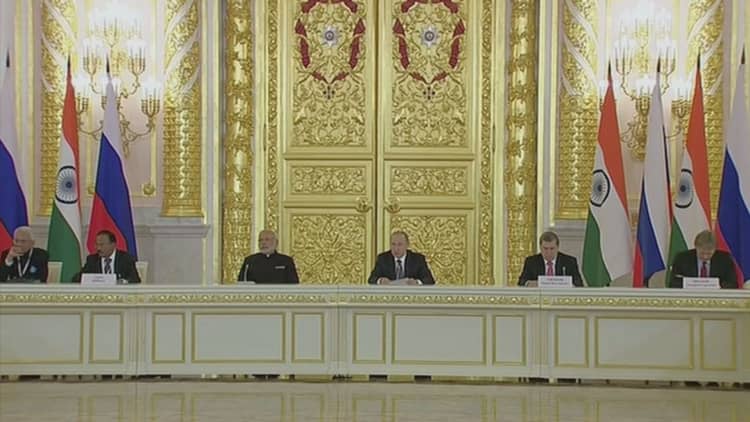



U.S. oil prices rose on Monday after China moved to boost its slowing economy and Saudi Arabia pledged to work with other crude producers to limit market volatility, feeding hopes the oil selloff would end.
A Reuters poll also indicated the Organization of the Petroleum Exporting Countries pumped less crude this month than in January, boosting market sentiment.
"Crude and product prices have the ability to stabilize for a couple of months as long as storage constraints are not forcing supply to be backed up toward the producing fields," said Jim Ritterbusch of energy markets consultancy Ritterbusch & Associates in Chicago.
Brent futures were trading at $35.97 per barrel, up 87 cents, or 2.48 percent. U.S. crude futures settled at $33.75 a barrel, up 2.96 percent, or 97 cents.
Since Feb. 11, the last time Brent was below $30, the crude benchmark has risen by 17 percent, though prices are still a fraction of the $115 of 20 months ago.
China, the world's largest oil importer, on Monday cut its reserve requirement ratio, the amount of cash banks must hold as reserves, for the fifth time in a year. The move boosted risk appetite across financial markets.
Saudi Arabia, which is working with OPEC members Venezeula and Qatar and non-OPEC producer Russia on a plan to freeze oil output at January highs, said it wanted stability in crude prices. Iran remained a stumbling block to the plan with its target to raise output to reach pre-sanction export levels.
The Saudi cabinet said in a statement it "will always remain in contact with all main producers in an attempt to limit volatility and it welcomes any cooperative action".
The Reuters survey released Monday found stable output in top exporter Saudi Arabia, an early sign that Riyadh is delivering on a Feb. 16 deal to freeze output and support prices, which hit a 12-year low last month.
Supply from the Organization of the Petroleum Exporting Countries has declined in February to 32.37 million barrels per day (bpd) from a revised 32.65 million bpd in January, according to the survey, based on shipping data and information from sources at oil companies, OPEC and consultants.
Most of the decline in February output has been involuntary. The biggest drop is in Iraq, OPEC's largest source of supply growth in 2015, due to the stoppage in flow along the pipeline carrying crude from the Kurdish region.
Countering that, Iran said on Monday its oil exports rose over the past month, climbing as high as 1.75 million barrels per day, adding to an already oversupplied market.
Russian President Vladimir Putin called a meeting with top managers of his country's leading oil producers on Tuesday.
"There is still a lot of downside risk ... but the U.S. crude market seems to have passed the worst point and crude runs should start creeping higher, taking pressure off inventory levels," said Richard Gorry, director of JBC Energy Asia.
U.S. producers cut the number of rigs drilling for oil for a tenth week running, taking the rig count to its lowest since December 2009.
A Reuters monthly poll showed on Monday that oil prices are expected to average a little more than $40 a barrel this year.
Data from InterContinental Exchange on Monday showed that investors in crude held more futures and options contracts betting on rising prices than at any time since the records began in 2011.
The amount of open positions in U.S. crude contracts betting on a further fall in prices has dropped to about 17 percent since mid-February.
At the same time, financial traders have raised their bullish bets on oil after talk of a global production freeze, signs of falling U.S. shale crude output and growing gasoline demand.
"There are tentative signs the worst may be over for commodities, at least judging by the pick-up in investor sentiment," Barclays said.




